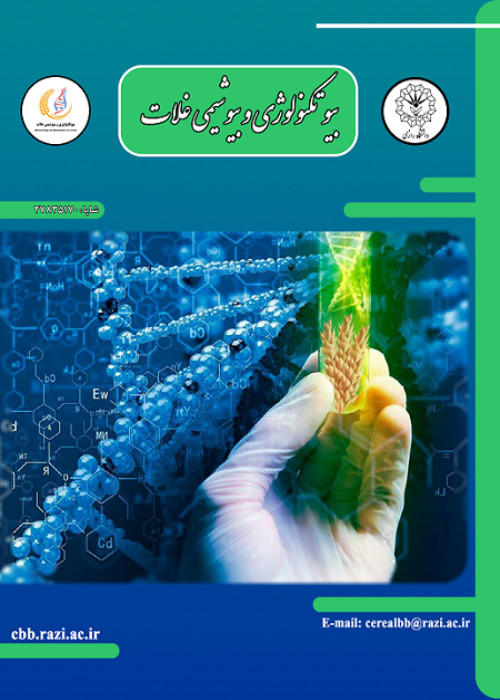Study the relationship between agronomical traits and mineral elements of grain in three genotypes of quinoa (Chenopodium quinoa Willd) under effect of planting date and planting density
Quinoa (Chenopodium quinoa Willd) a member of the Amaranthaceae family is a dicotyledon pseudocereal. Quinoa is a plant that is very resistant to unfavorable environmental conditions and shows high resistance to biotic and abiotic stresses. Quinoa seeds have a higher nutritional value than many cereal grains and contain higher quality protein and large amounts of carbohydrates, fat, vitamins, and minerals, which are used both in human food and for feeding animals. The high adaptability of this product to different weather conditions has increased the yield of its various types in countries outside of South America. The existence of nutritious compounds in quinoa seeds, including the combination of amino acids, minerals, and vitamins, has led to more research on the properties of this plant.
The field experiment was conducted to study the relationship between agronomic traits (including plant height, panicle length, number of seeds per plant, plant yield, thousand seed weight, seed yield, biological yield, and harvest index) and mineral elements of quinoa seeds (including Zn, Fe, Mn, Na, Ca, K, and P). The experiment was conducted in the 2018-2019 growing season at the faculty of agriculture, Razi University, Kermanshah with a randomized complete blocks design as a split-plot factorial with three replications. The experimental treatments included three planting dates (March 15, April 15, and May 15) as the main factor and the combination of planting densities (40 and 60 plants/m2) with genotypes (Q29, Titicaca, and Red Carina) as subplot factor.
The results of the experiment showed that the seed yield (2297.5 kg/ha) on the sowing date of April was significantly higher than March and May (1484.5 and 2137.7 kg/ha) sowing dates, respectively. The effect of the studied treatments on the mineral elements of quinoa seed was insignificant. The mean comparison for plant density showed that the density of 60 plants/m2 had a higher seed yield than the density of 40 plants/m2. The results of canonical correlation analysis showed that Wilk's lambda statistic was significant at a 5% probability level in the case of the first function, indicating the existence of a significant correlation between the two groups of the studied traits.
The results of this evaluation showed that zinc (Zn) and phosphorus (P) had the highest correlation with the corresponding focal function among the mineral elements. Among the agronomical traits, the highest correlation was between the traits of 1000 seed weight and panicle length with the first focal function. Therefore, the plants with higher values of 1000 seeds weight and panicle length, can be used to select seeds with higher amounts of zinc (Zn) and phosphorus (P).
- حق عضویت دریافتی صرف حمایت از نشریات عضو و نگهداری، تکمیل و توسعه مگیران میشود.
- پرداخت حق اشتراک و دانلود مقالات اجازه بازنشر آن در سایر رسانههای چاپی و دیجیتال را به کاربر نمیدهد.





